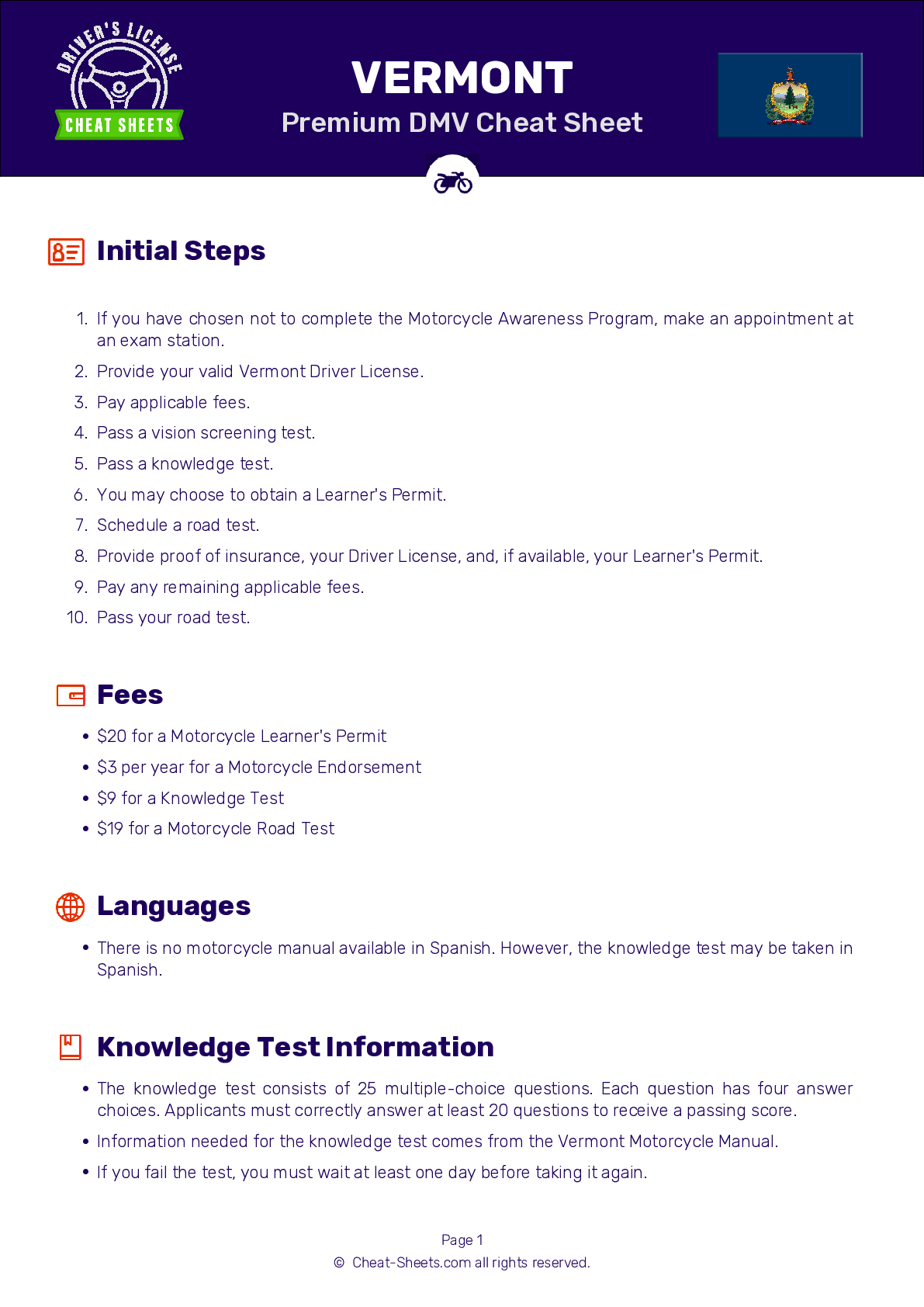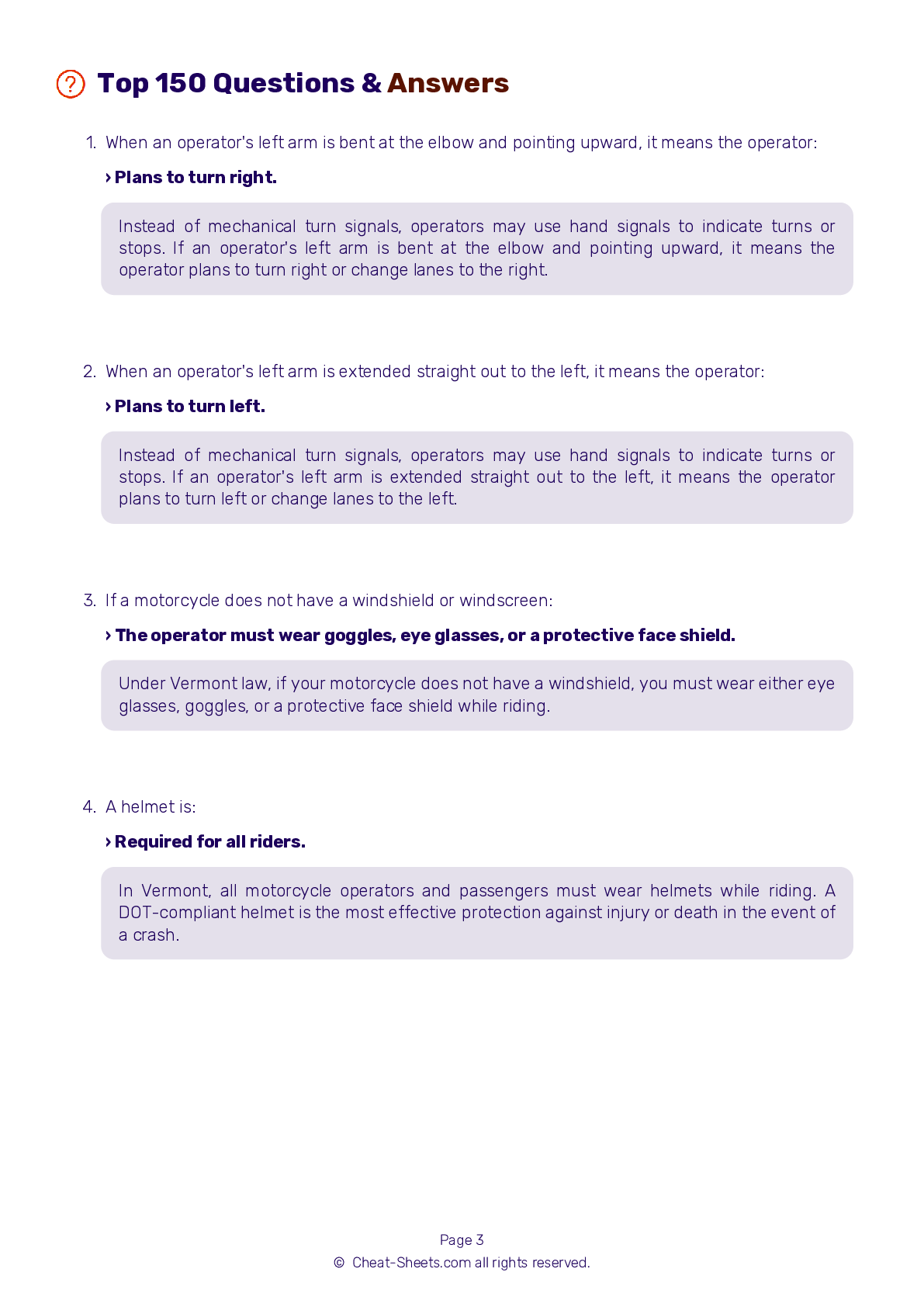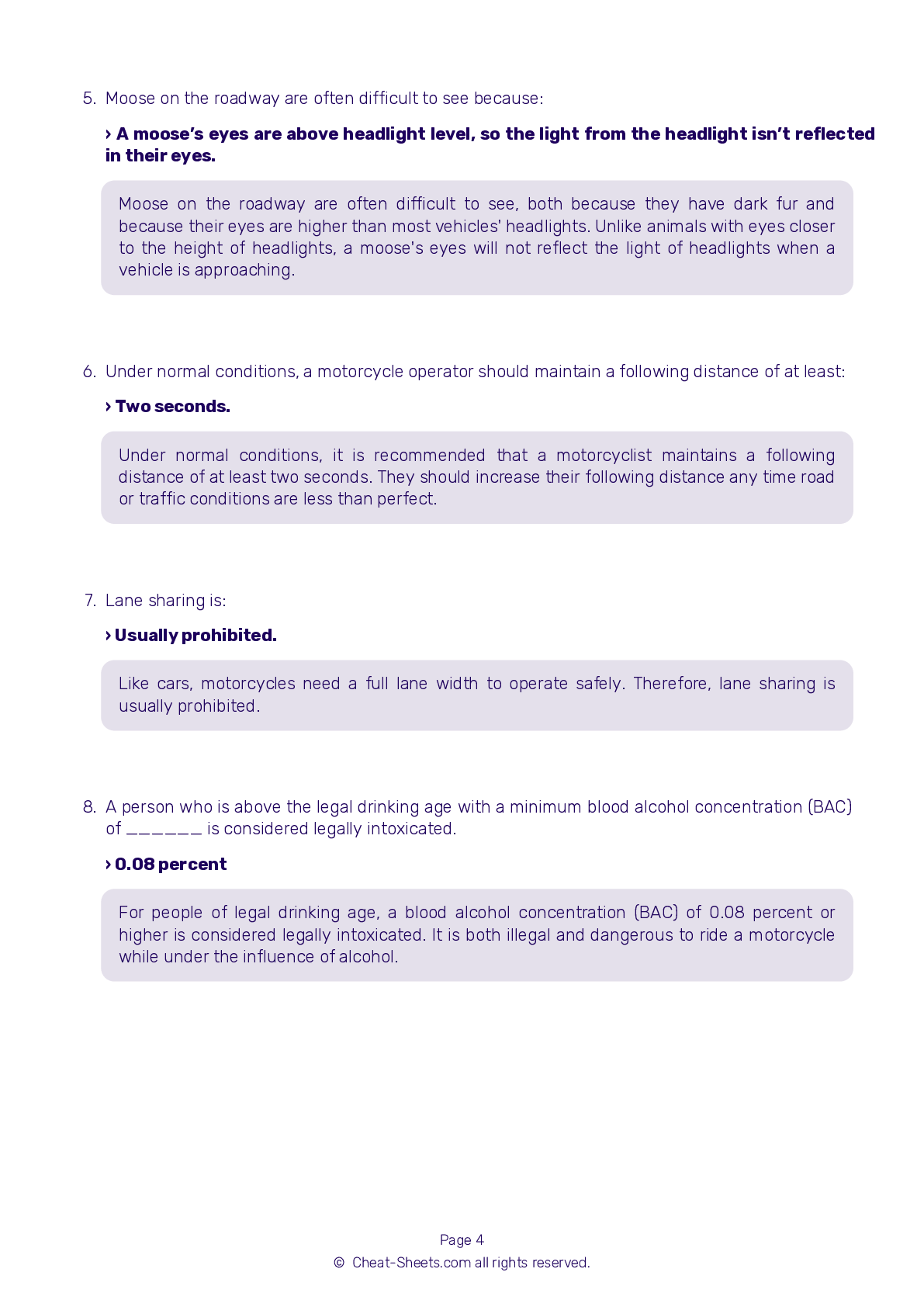2024 Vermont Motorcycle Permit Test 10
The following questions are from real DMV written motorcycle permit tests. These are some of the actual permit questions you will face in Vermont when getting your motorcycle learners permit. Each motorcycle theory practice test question has three answer choices. Select one answer for each question and select "grade this section." You can find this button at the bottom of the drivers license quiz. For a complete list of questions and answers for Vermont please visit https://cheat-sheets.dmv-written-test.com/en/vermont/motorcycle.
Number of Tests
Number of Question
Passing Score
1. You’ll have a better chance of avoiding serious injury if you wear all of the following, except:
Explanation
To protect yourself against injury, you should wear a DOT-compliant helmet; face or eye protection; a jacket and long pants made of sturdy material; boots or shoes that are high and sturdy enough to cover and support your ankles; and gloves made of durable material.
2. When riding at night, you should travel:
Explanation
When riding at night, travel at a slower speed than you would during the day under similar weather and traffic conditions. It can be difficult to see potential hazards in the dark, so slowing down can increase your chances of avoiding any hazards.
3. Most motorcycles have rounded, or convex, mirrors. These mirrors:
Explanation
In comparison to flat mirrors, convex mirrors provide a wider view of the road behind you. They also make objects seem farther away than they actually are. You should practice judging distances in convex mirrors if you are not used to them.
4. In which of the following situations should you increase your following distance?
Explanation
While a two-second following distance is generally adequate, you should increase your following distance any time conditions would require a longer stopping distance, such as when the pavement is slippery due to poor weather conditions. Additionally, you should increase your following distance at night, if you cannot see through the vehicle ahead, and when traffic is heavy.
5. When going through a curve, you should:
Explanation
Road and traffic conditions can change at any time. Always be prepared to change your lane position as appropriate no matter where you are on a roadway. The best path through a curve does not necessarily follow the curve of the road.
6. Can clothing help prevent injuries in the event of a crash?
Explanation




